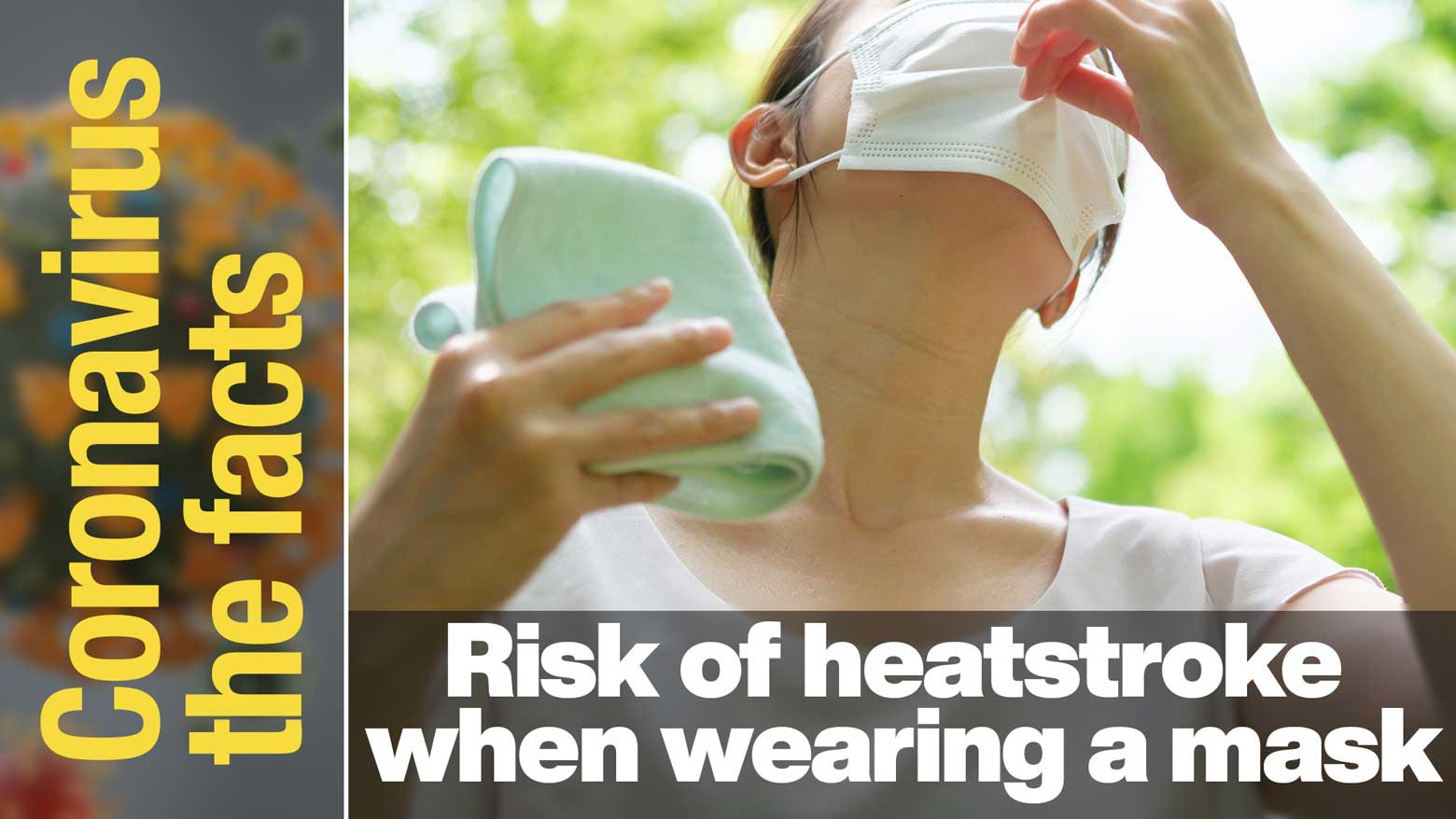This is part 35 of our coronavirus FAQ. Click here to read other installments: #Coronavirus the facts. Find the latest information and answers from experts on everything COVID-19.
Wearing a mask increases the temperature of your face
Earlier this summer, NHK used a thermographic camera to measure how much the temperature of a person’s face increases when wearing a mask. The test was carried out on in Tokyo’s Shibuya district, where NHK is located. When the subject was not wearing a mask, the temperature around the mouth was 36 degrees Celsius. However, this shot up three degrees, reaching 39 to 40 degrees, when the subject put on a mask. Five minutes later, the skin around the mouth started to sweat and the subject reported shortness of breath.
Susceptibility to heatstroke depends on situation
Professor Yokobori Shoji of Nippon Medical School Graduate School, an expert on heatstroke, says a mask does not always make its wearer more susceptible to heatstroke. But he says data shows that wearing a mask can cause difficulty breathing and an increase of around 10% in heart and respiration rates, and under such conditions, physical exercise and a surge in air temperature can lead to heightened risk.
The elderly and those living alone need to take precautions
Yokobori says it is important to wear a mask to prevent the spread of the coronavirus. But he also says the elderly and those living alone need to take extra precautions against heatstroke, and advises such people to periodically take off their masks and rest in less crowded areas while outdoors. Yokobori also suggests changing masks from time to time, as airflow can be blocked when the material becomes damp with sweat.
The information is accurate as of Aug. 5, 2020.
For your reference:
Backstories: How to beat heatstroke amid coronavirus pandemic

